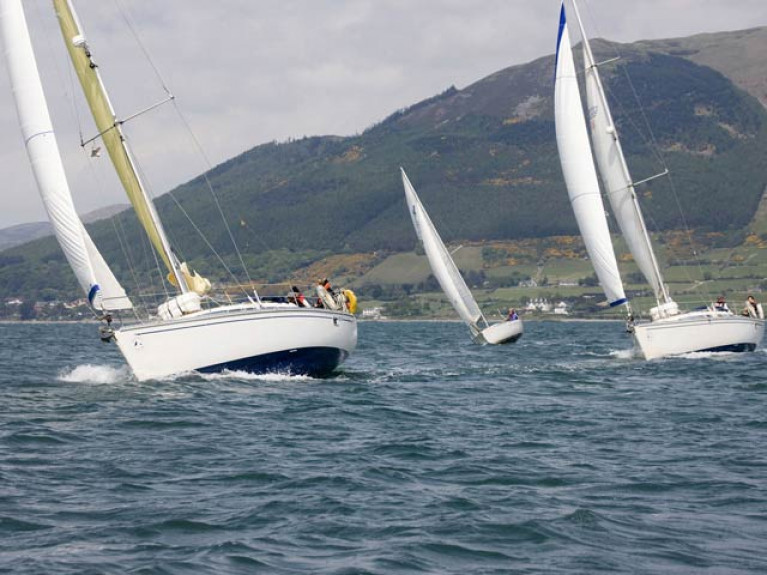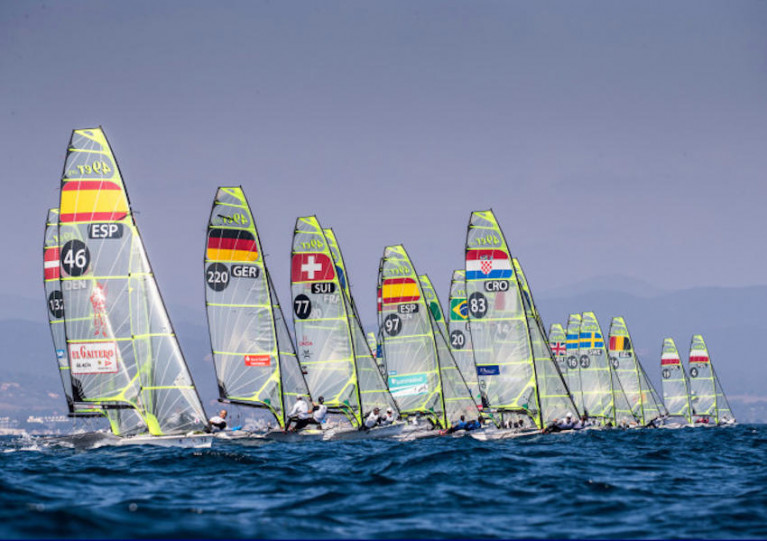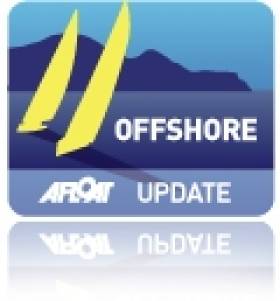Displaying items by tag: virtual regatta
The Ocean Race Launches Virtual Reality ‘Metaverse’ Experience
The Ocean Race has launched a metaverse experience pilot with Virtual Regatta and Accenture to engage fans and businesses in a new way with the renowned global yacht race.
The companies have developed a metaverse environment that allows gamers and enthusiasts of the race’s official eSailing game, Virtual Regatta, to take part in exclusive online events, interact with other fans and get access to team stats.
“We are entering the metaverse and our collaboration with Virtual Regatta and Accenture because we are explorers and pioneers,” said Richard Brisius, race chairman of The Ocean Race. “Since 1973 we have sought new ways for people to engage with what is happening in the ocean.”
Philippe Guigné, founder and CEO of Virtual Regatta, added: “The metaverse is a new experience provided by Virtual Regatta and The Ocean Race that will allow people to follow the physical and virtual race in an all-digital race village. Gamers and enthusiasts will be able to meet each other, watch the physical and digital event, and much more. This virtual reality setup will further enhance the fan experience.”
Accenture, The Ocean Race and Virtual Regatta are also providing e-commerce opportunities for brands to showcase their digital goods and services in the metaverse space, such as active apparel retailer and official clothing partner of the race Helly Hansen.
Additionally, The Ocean Race’s mission to protect the seas is incorporated in the metaverse strategy and content. The Racing with Purpose tent, named after the organisation’s sustainability programme, is an interactive space where visitors can explore how the race supports this goal and how they can get involved.
The area features a science station, which highlights how race teams are gathering vital data about the ocean, and a learning corner where visitors can discover and download learning programmes to inspire youth between 6–16 years old to protect the seas.
Also showcased is the Blue Voice campaign, which gives an opportunity for visitors to show their support by signing the petition for ocean rights.
“The metaverse will usher in a new era of our digital lives, overcoming the limitations of the physical world and creating new opportunities to immerse in issues and connect as communities,” said David Treat, who is the co-lead of Accenture’s Metaverse Continuum business group. “Our collaboration with The Ocean Race and Virtual Regatta is helping reinvent how people engage with the race and protect our oceans while creating value for all stakeholders.”
Brisius added: “Purpose drives The Ocean Race. Protecting our racetrack and restoring the health of the ocean is vital, and the metaverse can be a fantastic tool for helping give the ocean a voice. It is even more important for us to continue to explore new ways to engage and educate.
“We recognise that it is the young generation where we need to focus our efforts to build ocean literacy, as the metaverse is likely to attract many young users. In addition, we believe in the merits of Web 3.0 with a metaverse which will represent a fair internet controlled by the users, compared to the current Web 2.0 which is centralised and run by a few entities.”
More than 200,000 eSailing players are expected to take part in the Virtual Regatta Offshore and Inshore versions of the race. There are seven IMOCA legs and three VO65 Sprint stages on Virtual Regatta Offshore, with new features for an expanded virtual experience, mimicking the real race the crews are undertaking.
The Ocean Race metaverse pilot experience, in collaboration with Virtual Regatta and Accenture, will be available to users on a limited basis starting with the last week of Leg 3 of the race from Cape Town to Itajaí, Brazil. Request your metaverse access code HERE.
Virtual Regatta and The Ocean Race have renewed their eSailing partnership for the 2023 edition of the gruelling around-the-world yacht race.
The news follows the crowing of the latest eSailing World Champion in Alicante during festivities ahead of Leg 1 of The Ocean Race 2022-23, which got under way Sunday 15 January.
More than 200,000 players are expected to take part in the Virtual Regatta Offshore and Inshore versions of the race, which has seven IMOCA legs and three VO65 Sprint stages on Virtual Regatta Offshore — as well as new features for a virtual experience that promises to be even closer to reality.
“We are happy to be the official game of The Ocean Race for the fourth time and are proud to be associated with one of the world’s most important races, as well as an event that is committed to the protection of the ocean,” says Tom Gautier, head of Virtual Regatta Offshore.
“eSailing is steadily growing and attracting an ever increasing number of players. We expect more than 200,000 players on Virtual Regatta Offshore and Inshore over the next six months.”
In addition, 2023 is being touted as the year of the Metaverse for Virtual Regatta and The Ocean Race, who are being supported by Accenture.
“The Metaverse is a new and exclusive experience developed by Virtual Regatta and The Ocean Race, which soon onwards will allow people to follow the physical and virtual race in an all-digital race village,” Gautier said.
“Gamers and enthusiasts will be able to meet, watch the physical and digital event, and much more. This virtual reality setup will further enhance the fan experience.”
As official timekeeper of The Ocean Race in real life and on Virtual Regatta Offshore, Ulysse Nardin will present an official race watch to the winning eSkipper of the 2023 edition of The Ocean Race on Virtual Regatta Offshore.
A further eSkipper having crossed the finish line of the seven stages of the race will also have the opportunity to win a DIVER watch in a draw by bailiff. And there will be more prizes on offer as a reward for eSkippers’s skills throughout the race.
Another accolade up for grabs is the Stopover E-Cup, which will be based on Virtual Regatta Inshore and consists of eight IMOCA challenges taking place during the stop overs of The Ocean Race in between legs. The winners will be qualified for the semi-final of the eSailing World Championship and will receive prizes awarded by The Ocean Race.
The winner of each challenge of Virtual Regatta Inshore will qualify for a live final which will be broadcast in Ocean Live Park in Genoa and on social networks at the beginning of July. The winner will qualify for the semi-final of the eSailing World Championship.
For more details, see the official Virtual Regatta website HERE.
"How To Go eRacing" Will Be Revealed on Wednesday Evening by Ireland's Champion of the eSailors
It's arguably the case that the best way through lock-down is to assume it's all going to last a bit longer – maybe a lot longer - than most people think. Thus the most effective way to negotiate your way through it is to give yourself over with total dedication to the alternative virtual pursuits which have emerged online as the outside world comes to a halt, such that - in your enclosed little world - the time flies entertainingly by.
Thus although there were old salts whose response to the new availability of the Virtual Regatta in April 2020 was to grumble that if they wanted a nautical version of an entertainment arcade then they'd have long since been going to a nautical entertainment arcade, there were many others – almost a thousand – who have taken to it with enthusiasm.
The precise number since April 2020 is 960, and from it there emerged the ten top Irish eSailors of such ability that they reached international standards and two of them – Colin Kavanagh of Howth YC, and Cillian Dickson of Lough Ree YC (and HYC) – contested the final, with Colin Kavanagh emerging as the champion.
Far from being a screen addict, he's very much of the real world, racing in the local intensity of the Puppeteer 22 Class as the continuation of a sailing career which started with Mirrors at Sutton aged 12, and went on through Laser 2s, offshore 40-footers, 1720s, and Etchells 22s, while a couple of years as an instructor gave him a taste for serving sailing, such that he is now an Irish Sailing Board Member and has been on the Olympic Steering Group since 2013.
In the current pandemic stasis, he's the perfect guide for the Howth Yacht Club-hosted eRacing Introductory on Wednesday evening (January 20th) at 7 pm – sign on here
E-Sailing Proves Big Hit at Carlingford Lough Yacht Club
Carlingford Lough YC hasn’t been idle during the lockdown as members have enjoyed a Virtual Regatta, starting in early April, thanks to the RYA who arranged for sailing clubs to have a free subscription. To date, the club has had 165 races, 11 series of 15 races each.
CLYC is situated at Killowen on the northern shore of the dramatic sea lough straddling the border on the east coast, with Slieve Martin as a backdrop and the Cooley Mountains opposite, giving a broad expanse of water for water sports. For excitement within the lough mini-tornadoes or ‘kettles’ form during strong south-westerlies when squalls funnel down from the 600m high Slieve Foye in Co Louth.
Replacing all this activity on the water has been the racing in the Virtual Regatta which takes place every Wednesday and Sunday and all competitors join on a simultaneous Zoom session. This helps as everybody knows what is going on, rather than hanging around the start line wondering where everybody else is. It also allows hailing such as “starboard”, “you tack” and other polite exclamations! This is still going strong and although the dinghies are now sailing and dinghy courses continuing, normal racing has not yet resumed, although efforts are being made to have the cruisers racing on Saturdays.
Fourteen competitors and others from various parts of the globe including Ireland, North and South, England and Spain have taken part and there has been racing in Denmark, New Zealand, Italy, France, Germany, US, Spain, UK, and Australia. The class of boat is normally the J/70, but this has varied from time to time.
After 11 series overall leader is Typhoon 26 with 125 points, with Sulky Sue second on 126 points, followed by Far Niente (225 pts) and Legless (284 pts).
Kieran Cranley from CLYC says “
If you wish to join in email [email protected] and we can give you instructions about how the Zoom sessions and Virtual Regatta are organised. The craic is good, and the excitement is truly amazing!”
Ronan Downing was crowned virtual Champion of Champions in Sunday night’s (3 May) nail-biting finale to the Royal Cork Yacht Club’s Virtual Regatta leagues for April.
With 20 of the club’s best virtual sailors qualifying for the final, it was always going to be hotly contested.
Royal Cork Admiral Colin Morehead opened the Zoom meeting with a virtual prize-giving for all fleets and over 50 households were in attendance.
Colin commented on how great it was to see the club and its members continue to stay engaged through these difficult times. He also encouraged anyone interested in taking part to join any one of the Royal Cork’s many Virtual Regatta leagues.
Newly elected Irish Sailing president David O’Brien also joined the session and discussed how sailing’s national governing body is working with Sport Ireland to understand the implications of the Government roadmap on our activities.
Racing kicked off at 1900 with a six-race series allowing one discard and the final race being a double-points, non-discardable race. J70s were the boat of choice for the first three races and 49ers for the final three races.
Spectators who joined on Zoom were able to view the racing and were treated to commentary from Nicholas O’Leary, Séafra Guilfoyle and Cian Jones.
With five different race winners over six races, it was thrilling to watch. Virtual Regatta veterans Ronan Downing, Daragh Connolly and Donal Hegarty were proving hard to beat.
Thankfully, Laser sailor Harry Pritchard was keeping the boys honest and was in the hunt right up until the end, including a win in race five.
With five races completed, Daragh Connolly had a commanding lead going into the sixth and final race but disaster struck at the start when he was over the line and infringed another competitor, instantly ruling him out of contention.
Oppie sailor Liam Duggan and Topper sailor Joe O’Sullivan had a great battle but Ronan Downing’s speed proved too much and as he passed the lads downwind to take the lead which he held through to the finish.
This meant Ronan took first place overall in the series, Harry Pritchard was second and Daragh Connolly managed to climb back up to ninth in the final race which game him third overall. Full results are HERE.
RCYC issued congratulations to Ronan and thanks to all for joining and taking part on the night, league sponsors North Sails and RopeDock, and Siobhan Carmody for managing results.
Those looking to join in on the fun can sign up for one of the May leagues which will commence soon.
Rowing Ireland Launches First Virtual Regatta
Rowing Ireland has launched a Virtual Regatta. The regatta will run over lockdown bank holiday weekend from 9 am on Saturday the 2nd of May and finish at 5 pm Monday the 4th of May.
This will be an opportunity for our members to represent their clubs and for our members at every level. Whether they are a World medallist or part of our High-Performance team this will give Rowing Ireland members an opportunity to clock their km's with their club and province for some great prizes while staying active.
Prizes
There are four new Concept 2 ergometers and some exciting spot prizes to be won. Here are the prizes on offer:
- A new Concept2 ergometer for the top club in each province.
- A trophy for the top club in the country.
- There are exciting spot prizes to give out along the way for best photo submission, most metres completed in one day, and best 2k time.
- Individual 1st, 2nd and 3rd medals for most distances in each age category in each province.
How it will work
- Rowers complete their work out and take a selfie with their monitor showing their times
- Input their information, distances in metres and selfie through the Rowing Ireland Virtual Regatta page
Rowing Ireland is encouraging its High-Performance team preparing for Tokyo 2021 and Junior 14 members to wear their club colours proudly and compete in the first Virtual Regatta.
Hyères Olympic Week 2020 Goes Virtual
Hyères Olympic Week (Semaine Olympique Française) — which was scheduled to begin today, Saturday 18 April — has been cancelled by its organisers for 2020 as no suitable date later this year has been deemed viable.
But in its stead is the Virtual SOF on the Virtual Regatta platform, which recently partnered with World Sailing to launch eSailing versions a series of iconic Olympic class regattas.
From Monday 20 to Sunday 26 April, all are invited to take part in the Virtual SOF, for the first time open to everyone — sailors and spectators alike — where every day you will be able to test your sailing skills on a Nacra 17 or 49er.
In the meantime, organisers are working on the 2021 edition of Hyères Olympic Week together with sponsor Toulon Provence Méditerranée and World Sailing.
More than 600 boats from 60 countries are expected to converge on the Côte d’Azur resort just weeks ahead of the rescheduled Tokyo 2020 Olympic Games.
However, the event “will already be in Paris 2024 mode” as the fleet will include new classes such as windfoils, mixed kitefoils, mixed 470 and a double mixed offshore event that will not be a part of the Tokyo games.
Save the dates 17-24 April 2021 and for more see the Hyères Olympic Week website.
The Royal Cork Yacht Club has been sailing on Cork Harbour for the past 300 years and while boats and their crews are currently unable to take to the wonderful waters of Cork Harbour due to COVID-19 a little plan was hatched by the RCYC Keelboat Committee to bring the Keelboat Racing online and host the first Keelboats Digital Virtual Regatta.
Nigel Young of North Sails Ireland kindly came aboard to sponsor the inaugural RCYC Keelboats North Sails April Digital Virtual Regatta which will formally commence on Thursday the 9th of April and run for four weeks. Last night, in advance of the league commencing, a series of one practice race followed by six races was hosted and sponsored by North Sails to allow sailors to get used to the online system.
Commenting on the evenings racing Nigel Young says “In these uncertain times we find ourselves in North Sails are delighted to support initiatives like this that keep our sport alive. Not only that, but it was also great to see my family fully engaged in that online fun. I think what the results show is that some of the club's top sailors spend too much time playing computer games”
Using the app Virtual Regatta Inshore ® 20 of RCYC Keelboat members logged onto the racecourse from the comfort of our own homes and lined up on the start line. The boat for the evening was to be “Day Sailor” which are very similar to j70s with windward-leeward courses to be sailed for the evening.
The evening’s race schedule was to mirror that of the upcoming league commencing on the 9th of April with one practice race followed by six races with discards every 6th Race. The regatta was hosted by the Rear-Admiral of Keelboats Daragh Connolly and communication was done via a WhatsApp group. VHFs were also used by some of the racers to add to the occasion. It is rumoured, however, this remains unproven to date, that Donal Hegarty, who was at the helm of Azar for the evening, was fully geared up at home with Oilskins and buoyancy aid being worn for the duration of the races.
From the first gun of the practice race, it was clear that there was a mix of sailors with a number of very competitive sailors (well used to the online platform) and a few new entrants to the online sailing world. Racing was very close all over the course with meters separating the boats. Tom McGrath proved Nigel Young’s earlier comments correct by showing everyone his stern for the race and taking line honours with comfort in the practice race.
Race one began with a strong start from Killian Collins on ‘Red Shift’ followed by Cian Jones on ‘JellyBaby2’ and Daragh Connolly taking 3rd on ‘Yanks $ ffrancs’. In race two, JellyBaby 2 took line honours followed closely by James Young with Tom McGrath completing the podium. The following four races were very close battles with the competitive spirit coming out in all. Sailors came ashore and it was quickly clear that Killian Collins’ 4 first places on the night make him the one to watch as he won the evening with only 10 points. Donal Hegarty’s ‘Azar’ was in second place with 15 points and Cian Jones on ‘Jellybaby2’ was third on 19 points. There was a strong number of spectators watching the racing which added to the spirit of the event and made it a great evening for both the spectators and the racers.
Next Thursday night will see the start of the RCYC Keelboats North Sails April Digital Virtual Regatta which will run from Thursday 9th April to 30th April. You can log on and watch the racing live with the first gun being 20.00hrs for the practice races, followed by first six races of the league.
Results can be viewed here
Professionals Join In Virtual Offshore Race Across Atlantic
Professional offshore sailors Sam Davies, Armel Le Cléac’h, Boris Hermann and Jérémie Beyou will join amateur enthusiasts in a virtual sailing race from La Rochelle to Curaçao from today, Monday 23 March.
Online game platform Virtual Regatta will host the esailing event, which kicks off just after 11am Irish time — and has also unlocked VIP status for all registered players who can join the fleet via their web browser, wherever they are in the connected world.
Players can choose from four popular offshore classes — IMOCA, Class 40, Figaro 3 and Ultim — and weather conditions within the game will replicate the real-life conditions of the route across the week-long race.
For more on the virtual race and how to watch or take part, see VirtualRegatta.com
€10,000 Up for Grabs in Five Oceans Game
Sailing fans and armchair experts can now compete in their own Ultimate Solo Challenge from the comfort of their own homes with the VELUX 5 OCEANS Virtual Regatta game. What's more, there's €10,000 of prize money up for grabs for the best virtual ocean racers over the course of the 30,000-mile solo yacht race.
The virtual regatta game allows players to race their virtual Eco 60 yachts against the skippers as they sail around the world solo. Players can control their virtual yacht's heading and sail plan as well as which angle to the wind the yacht sails at.
Prizes will be given to the top three virtual skippers on each of the five ocean sprints. €10,000 of prize money will be given out over the course of the race. Players can also win a year-long professional subscription to race suppliers PredictWind, a marine weather forecasting tool, worth €500 as well as a year membership to Sailors for the Sea worth $500.
There will also be prizes for the top ten overall. Here's how the prize money will be broken down:
Each ocean sprint:
1st: €700 + 1 year PredictWind professional subscription
2nd: €350 + 1 year Sailors for the Sea membership
3rd: €100 + Sailors for the Sea hat/newsletter
Overall:
1st: €900 + 1 year PredictWind professional subscription + 1 year Sailors for the Sea full membership + Sailors for the Sea hat/newsletter
2nd: €800 + 1 year PredictWind professional subscription + 1 year Sailors for the Sea full membership
3rd: €600 + 1 year PredictWind professional subscription
4th: €500 + 1 year PredictWind professional subscription
5th: €300 + 1 year PredictWind professional subscription
6th – 10th: €200





































































